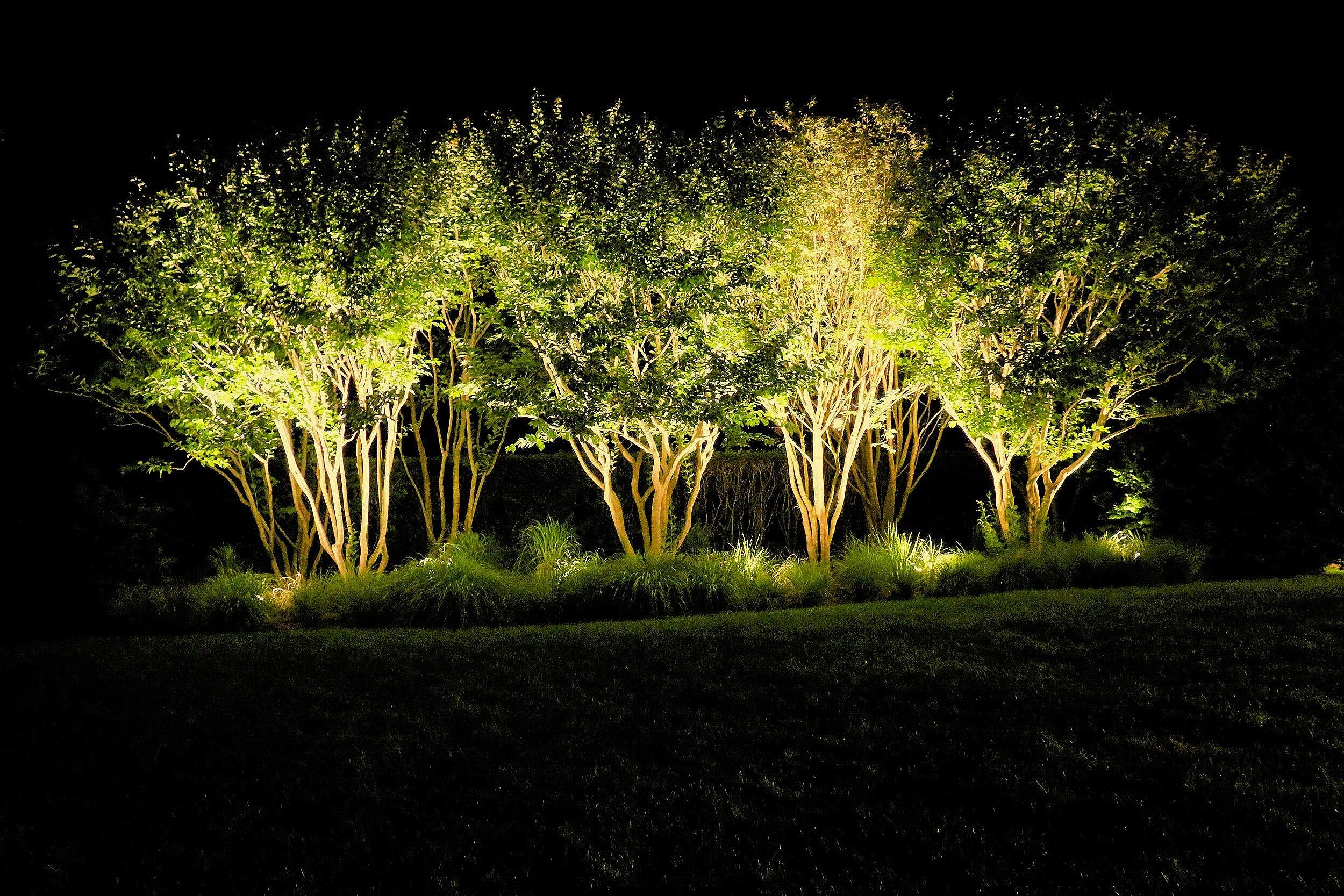Using Uplighting and Downlighting to Enhancing Your Landscape
When it comes to outdoor lighting, creating the right atmosphere often depends on the technique you use. Two of the most popular methods—uplighting and downlighting—offer distinct effects that can transform your landscape. Understanding the differences between these approaches will help you envision a lighting scheme that enhances both the beauty and functionality of your space.
The top image is a great example of combining uplighting and down lighting created by Hamptons Landscape Lighting lighting designer, Vanessa Kordich.
“This lighting scene was created by utilizing well lights that sit below ground to reduce the glare that would normally come from the light source. We used tree mounted bullet downlights to highlight the trunk and its connection to the ground,” Kordich explains. “The design was an effective use of fixture placement as the tree large and wide. The size created challenges but also made it fun to ensure the lights were properly calibrated and aimed,” she continued. “I love the areas of darkness in the canopy which makes the scene feel ethereal, like the tree is glowing.”
What is Uplighting?
Uplighting is all about creating drama and depth. With fixtures placed at ground level, the light is directed upward to highlight specific features. This technique is perfect for emphasizing tall trees, statues, or textured walls, drawing attention to their shape, height, and intricate details. By casting dramatic shadows and creating striking contrasts, uplighting makes these elements stand out, even in the darkest settings.
What is Downlighting?
Downlighting, on the other hand, mimics the natural light of the sun or moon. Fixtures are installed in elevated positions—such as trees, walls, or poles—and the light is directed downward. This approach provides soft, subtle illumination, ideal for creating a relaxing ambiance. Downlighting is commonly used to illuminate pathways, seating areas, or gardens, ensuring safety while blending seamlessly with the environment.
Key Differences Between Uplighting and Downlighting
Direction: Uplighting projects light upwards, while downlighting focuses light downward from an elevated source.
Purpose: Uplighting highlights and enhances specific features, creating a focal point. Downlighting is more functional, offering ambient illumination for practical use.
Visual Impact: Uplighting delivers a bold and dramatic look, perfect for making a statement. In contrast, downlighting provides a natural, understated effect that complements the surroundings.
Installation: Uplighting fixtures are placed at ground level and are easier to position, while downlighting requires elevated fixtures, which can involve more complex setups.
Applications: Uplighting works best for tall trees, statues, or textured walls, while downlighting suits pathways, patios, or gardens.
When to Use Uplighting
If you want to create a dramatic effect or draw attention to architectural or natural features, uplighting is your go-to technique. It’s ideal for making your landscape visually striking, especially in areas where bold contrasts can shine—literally. Consider uplighting for spaces where height and texture are key, such as tall trees, columns, or rough stone walls.
When to Use Downlighting
For a softer, more natural look, downlighting is the answer. This technique is perfect for functional lighting, ensuring that pathways are well-lit and outdoor seating areas feel cozy and inviting. It’s also great for creating a “moonlight” effect when fixtures are mounted high in trees, casting dappled light onto the ground.
Final Thoughts
Choosing between uplighting and downlighting—or using both—depends on your goals for your outdoor space. Whether you’re aiming for dramatic flair, subtle ambiance, or a mix of both, these lighting techniques can transform your landscape into a place that’s as inviting as it is beautiful. With the right design, your outdoor space can truly shine, day or night. We are happy to help you create the lighting design that you envisioned. You can see more of our work here and a list of our services here. We look forward to hearing from you!
You can book a consultation with Vanessa Kordich below
Or if you prefer, you can tell us a more about what you are looking for here:



